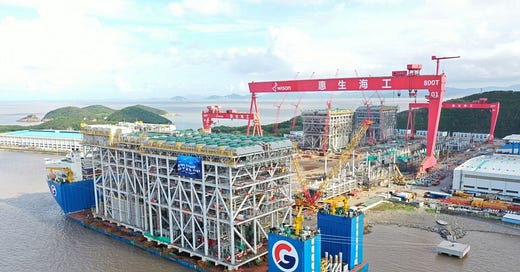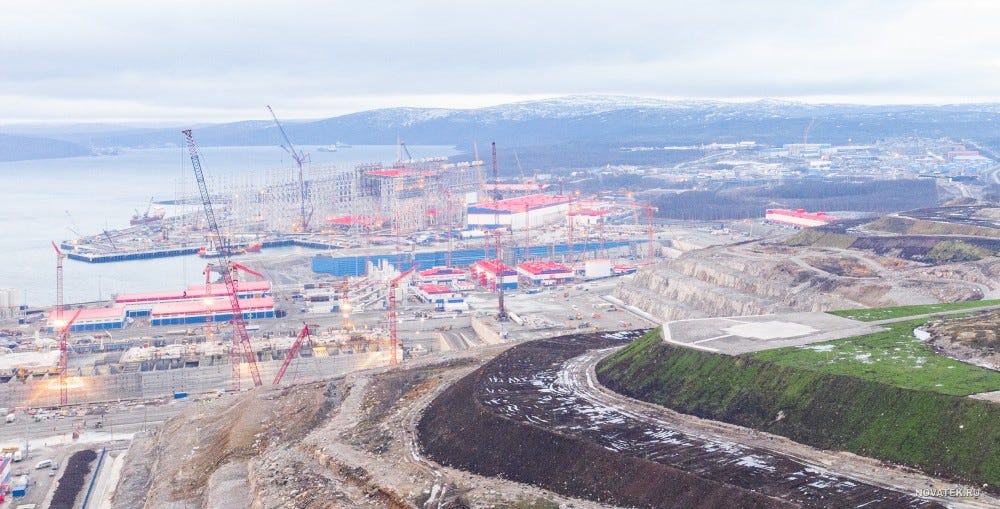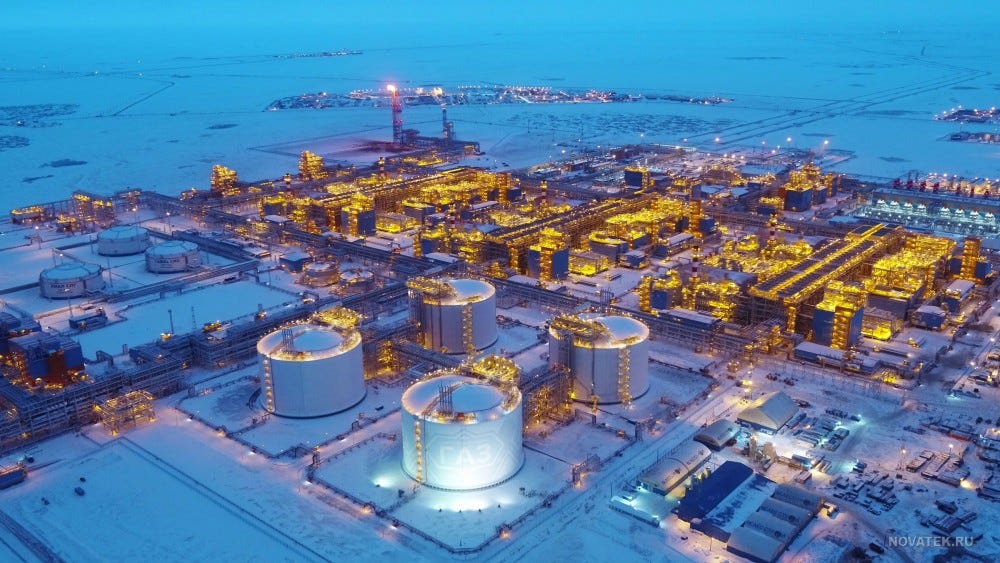Those who watched the videos linked in the Amur Region article will be equally impressed by the construction of what is the first of three gravity-based LNG processing plants that will be towed to where the gas fields are located instead of building a massive underwater network of pipelines to deliver the raw gas to an onshore processing site. Yes, that implies these giant facilities will be afloat on massive barges. Prior to the massive sanctions regime that began in March 2022, one of the first modules was built and transported from China via the Northern Sea Route to Murmansk for final construction as shown in the following photo.
The "GPO Grace" departed the Wison Offshore & Marine yard in China on August 19, 2021 and is now sailing towards Murmansk via the Northern Sea Route. Photo: GPO Heavylift
The Barents Observer provided this report on the project as it stood at the time. This article from the same publication has 30 photos of the construction of the “World’s largest LNG construction yard taking shape in Belokamenka” of which this is one.
And here’s another informative background article revealing the roots of today’s efforts by Russia, “In push for global lead in LNG, Moscow takes aim on Arctic tundra: Russia's new government Program on Liquified Natural Gas includes a series of new Arctic projects, among them possibly the Shtokman field.”
Russia has huge reserves of natural gas in Yamal and is the process of building several LNG plants in the region. Photo: Novatek
Some readers were probably lucky enough to be given an Erector Set or Tinker Toys when they were young and built many things with them. A few probably went on to become engineers. Most people seem to find such massive projects engrossing in a positive way. Russian engineers decided on these types of machines because they’re environmentally friendlier than trying to build massive onshore structures in the Arctic environment. Yes, there’ll be some onshore supporting components, but not the massive machines, which is theory are portable and can be moved from one field to another.
Videos were promised, and now that the context is set and readers have some prior knowledge. Instead of being embedded, these videos as with those from Amur will be linked. This first one is “RHI ARCTIC LNG 2 AWP1B PROJECT FIRST ARC - MURMANSK KRONDEKS YARD”; the second, “RHI - ARCTIC LNG 2 PROJECT MODULE FABRICATION”; the third, “RHI 457 T STEEL STRUCTURE SUBDECK TRANSPORTATION - ARCTIC LNG 2 AWP1B PROJECT - MURMANSK”; the fourth, “RHI SAILING WITH 693T & 457T STEEL STRUCTURE SUBDECKS ARCTIC LNG 2 AWP1B PROJECT”; the fifth, “RHI Arctic LNG 2 - International Women in Engineering Day”; and last “Heading to the Arctic: the history of Arctic LNG 2 from the first concrete to the journey to Gydan.” Unfortunately, all audio is in Russian, but the first five have English subtitles. Oddly, more videos appeared in the search queue. This one, “Project Yamal: Year-round construction in the Arctic,” provides a good overview and has English subtitles. This report, “Yamal LNG Project,” is a somewhat dated overview narrated in English. There are likely more to be found if you search using different terms, but all the above should occupy an hour or so of your time. Perhaps when it’s finished, Novatek will produce a video that captures the history of the entire project, which as you saw is hundreds of projects altogether. And as with Amur, it’s not alone by any means.
*
*
*
Like what you’ve been reading at Karlof1’s Substack? Then please consider subscribing and choosing to make a monthly/yearly pledge to enable my efforts in this challenging realm. Thank You!







Sure beats Dominion's largest US offshore wind power project. To pay for escalating costs Dominion sold three gas processing plants to Canadian Enbridge.
Go woke, go broke.